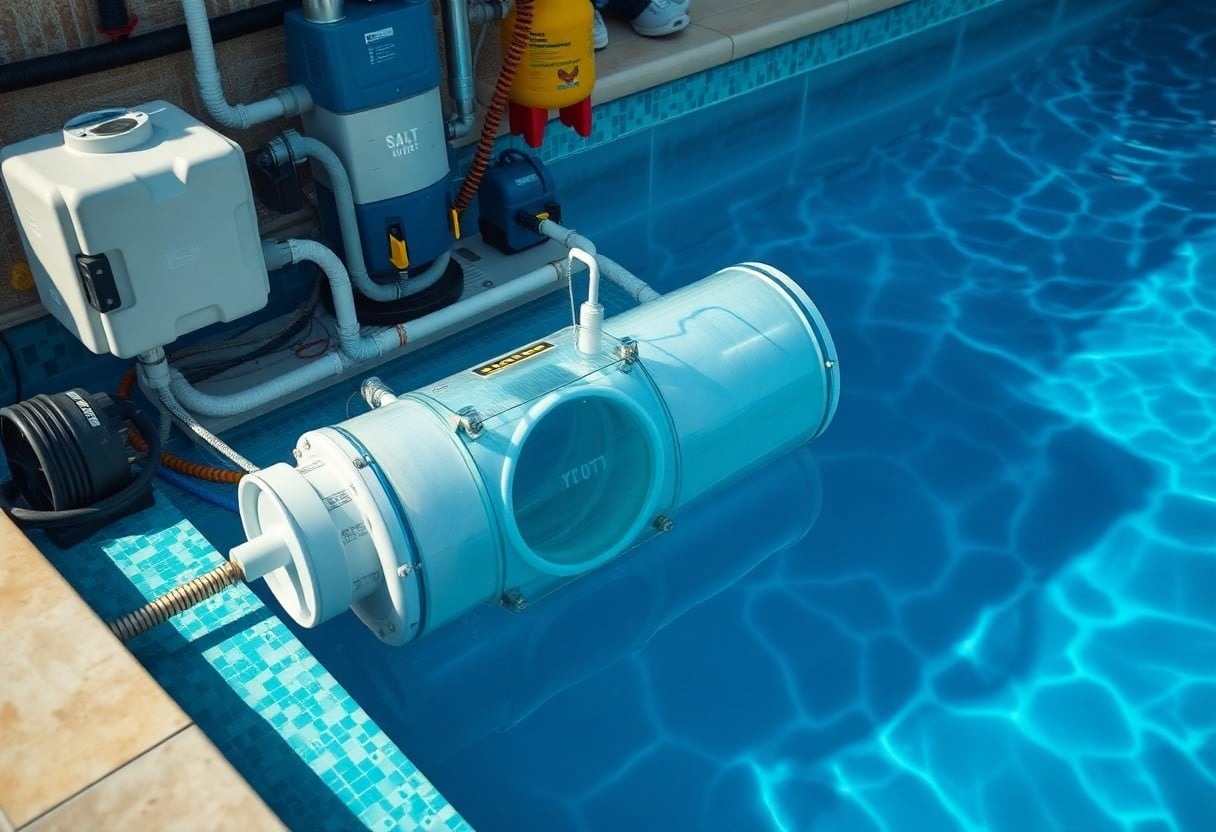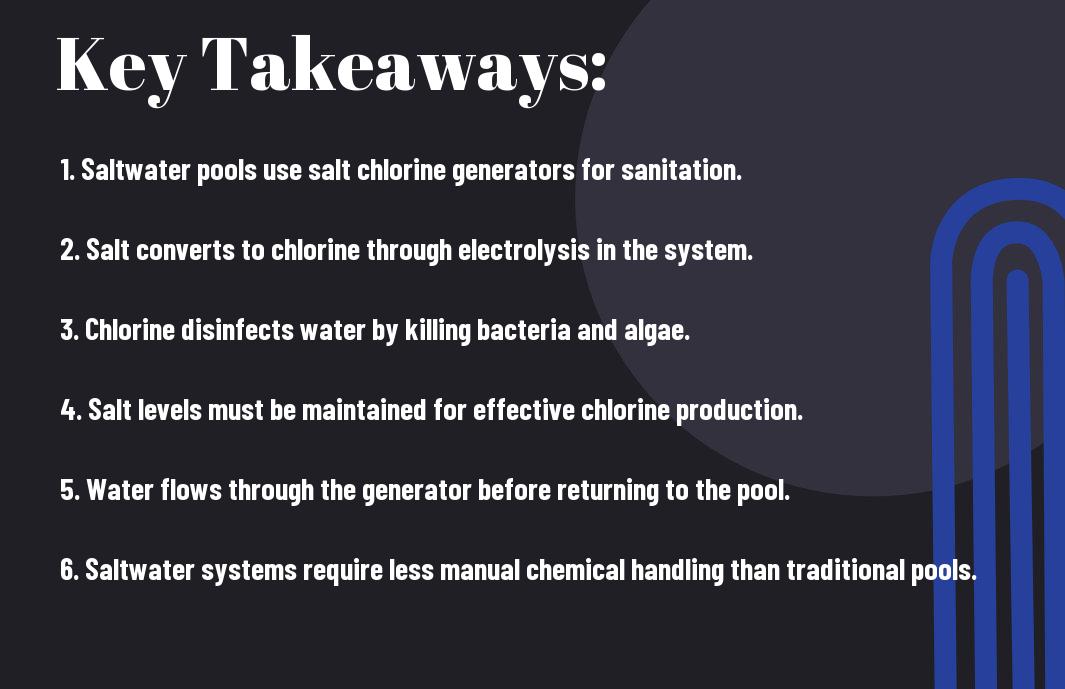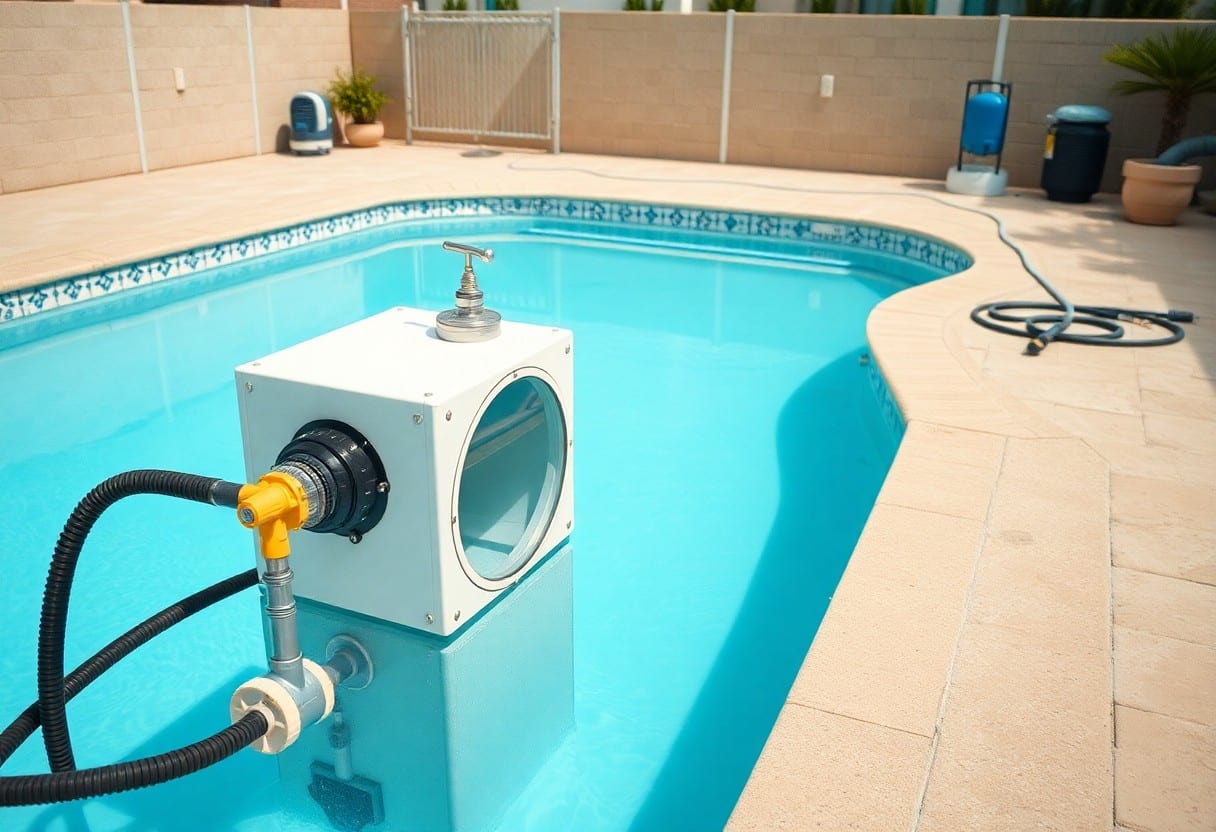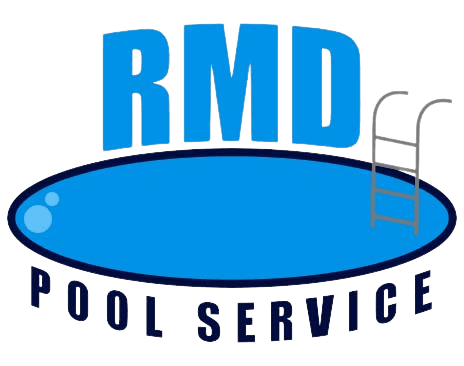Saltwater pools utilize a unique approach to sanitizing your water by converting salt into chlorine through a process called electrolysis. This system offers a gentler swimming experience while still maintaining a clean and safe pool environment. You’ll discover how the saltwater chlorinator functions, the importance of salt levels, and the benefits of choosing this system over traditional chlorine pools. Understanding how your saltwater pool operates not only enhances your enjoyment but also simplifies maintenance, making it a smart choice for many pool owners.

The Science of Saltwater Chlorination
Understanding the science behind saltwater chlorination reveals how salt becomes an effective sanitizer in your pool. The process starts when you add sodium chloride (common table salt) to your pool water, which is typically at a concentration of around 3,000 to 4,000 parts per million. This salt dissolves in the water, and during the chlorination process, a device known as the salt cell uses electrolysis to convert the dissolved salt into chlorine, effectively keeping your pool clean and safe for swimming.
How Electrolysis Transforms Salt into Chlorine
Electrolysis is a process that uses electrical currents to facilitate chemical reactions. In your saltwater pool system, the salt cell generates chlorine gas when the electrical current passes through the saltwater solution. This gas then dissolves into the water, forming hypochlorous acid and sodium hypochlorite, both of which are potent sanitizers. This transformation ensures that your pool water is continuously sanitized, creating a healthier swimming environment.
The Role of a Salt Cell in Water Sanitization
The salt cell is a vital component of the saltwater pool system, directly responsible for the electrolysis process that converts salt into chlorine. Positioned within the filtration system, it comprises several metal plates coated with a special material that facilitates the electrolysis process. As the water flows through this cell, it undergoes the necessary chemical transformation, producing chlorine that circulates back into your pool, ensuring consistent sanitization.
The efficiency of the salt cell is fundamental to maintaining clean water in your pool. Typically, these cells last three to seven years depending on the quality of water and maintenance practices. Regular cleaning and ensuring proper water balance will maximize the lifespan of your salt cell, allowing it to efficiently generate the chlorine your pool needs. This reliable process not only saves you time and effort in managing pool chemistry but also reduces chemical costs, providing a more sustainable approach to pool maintenance.

Benefits of a Saltwater Pool System Over Traditional Chlorination
Switching to a saltwater pool system offers a range of benefits compared to traditional chlorination. Not only are you providing a more pleasant swimming experience, but you also enjoy reduced chemical costs and lower maintenance requirements. The natural chlorine generated from the salt is gentler on your skin and eyes, making your pool a more inviting space. Additionally, with less reliance on harsh chemicals, the overall environmental impact is mitigated, creating a win-win for both you and your surroundings.
Healthier Swimming Experience for Users
Your swimming experience significantly improves with a saltwater pool system, as the water feels softer and less irritating. Unlike traditional chlorinated pools, which can cause dry skin, red eyes, and unpleasant odors, the lower chlorine levels in saltwater systems create a more enjoyable environment. This softer water is easier on your body, ensuring that you can spend more time swimming and less time dealing with irritation or discomfort.
Cost Savings and Maintenance Efficiency
A saltwater pool system ultimately leads to considerable cost savings and less frequent maintenance. Although the initial investment may be higher, the automatic chlorine generation system greatly reduces the need for purchasing and handling traditional chlorine products, leading to lower ongoing costs. Maintenance is also simplified since natural chlorine levels stabilize, meaning you spend less time balancing chemicals and more time enjoying your pool.
Over time, the economics of a saltwater pool become increasingly favorable. Studies have shown that homeowners can save hundreds of dollars annually on chemical replacements and maintenance supplies. The longevity of saltwater systems themselves usually surpasses that of traditional chlorinators, meaning you’ll probably avoid the expense of frequent repairs and replacements. Owners often report lower incidences of algae growth, further reducing the time and money spent on cleaning. Together, these factors make a saltwater pool a more efficient and cost-effective choice for many homeowners.
Essential Components of a Saltwater Pool
A saltwater pool system comprises several key components that work synergistically to maintain water quality and ensure an enjoyable swimming experience. The primary elements include the salt generator, filtration system, and circulation pump. Understanding how each of these components operates will help you appreciate their roles in keeping your pool clean and the water balanced.
Saltwater Chlorinators and Their Mechanisms
Saltwater chlorinators, also known as salt chlorine generators, convert salt in your pool water into chlorine through a process called electrolysis. When you add salt to your pool, the chlorinator uses electrodes to initiate a chemical reaction that produces chlorine gas, which then dissolves in the water, maintaining optimal sanitation levels. This system reduces the need for traditional chlorine, making pool maintenance easier and more cost-effective.
Filtration Systems: Keeping Your Pool Clean
Your filtration system plays a vital role in keeping the water in your saltwater pool clear and clean. It works in tandem with the circulation pump to remove debris, contaminants, and any impurities that might affect water quality. A quality filtration system typically encompasses sand, cartridge, or DE filters, each designed to trap different types of particles efficiently. Regularly cleaning and maintaining your filter ensures optimal functionality and longevity.
A well-functioning filtration system is imperative for enhancing your pool experience and prolonging the life of the saltwater system. For instance, sand filters utilize a porous medium to catch dirt and debris, while cartridge filters require less backwashing and maintenance. By routinely checking your filter pressure and cleaning or replacing filter media as needed, you maintain water clarity and chemical balance. Ultimately, effective filtration reduces reliance on chemical additives, promoting a cleaner, healthier swimming environment for you and your family.

Troubleshooting Common Saltwater Pool Issues
Despite their many benefits, saltwater pools can present a range of issues requiring troubleshooting to maintain optimal water quality. Identifying problems early can help you avoid extensive repairs or uncomfortable swimming conditions. A thorough understanding of typical saltwater pool complications allows you to tackle them efficiently and keep your pool in top shape.
Identifying Imbalance in Salt Levels
Salt levels should be monitored regularly to ensure they remain within the recommended range of 2700 to 3400 ppm. Low salt levels can lead to corrosion of pool equipment, while high levels may cause cell damage or excessive chlorine production. Testing strips or a digital salt tester can help you track these levels accurately, enabling you to make necessary adjustments promptly.
Addressing Chlorine Generation Problems
When faced with low chlorine production, it’s often due to insufficient salt levels, cell scaling, or a faulty salt cell. If the salt concentration is adequate, scrubbing the salt cell to remove mineral deposits can enhance its efficiency. Should problems persist, inspecting the electrical connections or replacing the cell might be necessary. Over time, salt cells typically need replacement every 3 to 5 years, depending on usage and maintenance practices.
Environmental Impact and Sustainability of Saltwater Pools
Saltwater pools offer several environmental benefits, positioning them as a more sustainable choice for pool owners. By generating chlorine through electrolysis, these systems reduce the dependence on harsh chemicals, which can have detrimental effects on local ecosystems. Additionally, the use of salt reduces the chance of chemical spills and runoff, making these pools a safer option for the environment. The long-term benefits of saltwater systems extend not only to pool maintenance but also to the health of surrounding wildlife and water sources, fostering a balance between recreation and environmental responsibility.
Reduced Chemical Usage and its Advantages
Utilizing a saltwater pool system greatly minimizes the need for traditional chemical treatments. By converting salt into chlorine, you significantly decrease the volume of harmful products entering the water, leading to a safer swimming environment. This reduction in chemical usage not only benefits swimmers but also lowers the risk of skin and eye irritation, creating a more enjoyable recreational space. Moreover, fewer chemicals mean less hazardous waste and a reduced burden on wastewater treatment facilities, contributing positively to local ecosystems.
Longevity and Energy Efficiency of Modern Systems
Modern saltwater pool systems are designed with energy efficiency and longevity in mind, often extending the lifespan of your pool equipment. High-quality salt chlorinators and pumps operate at a lower energy consumption rate, thereby reducing your electricity costs over time. Many of these systems include advanced monitoring technology that optimizes performance, enabling you to enjoy a well-maintained pool while conserving energy. Investing in these efficient systems pays off not just in terms of reduced utility bills but also through the lower frequency of equipment replacement, enhancing sustainability and decreasing environmental waste.
Many saltwater systems boast energy-efficient models that can significantly cut your operational costs. For instance, modern variable-speed pumps allow you to adjust the flow rate according to your pool’s needs, which could save up to 70% in energy expenses compared to traditional pumps. These features, combined with durable materials designed to withstand corrosion from salt, lead to longer-lasting operational life for your pool equipment. Consequently, you can enjoy a well-maintained swimming experience while reducing both your environmental footprint and the strain on your wallet, making it a wise investment for the eco-conscious pool owner.
Final Words
Conclusively, understanding how a saltwater pool system works empowers you to maintain a cleaner and more efficient swimming environment. By utilizing a salt chlorine generator, you can transform salt into chlorine, reducing the need for traditional chlorine products. This process not only makes your pool water gentler on your skin and eyes but also simplifies maintenance. Knowing the balance of salinity and the importance of regular monitoring can enhance your enjoyment of your pool, ensuring it remains a refreshing oasis for you and your family for years to come.
